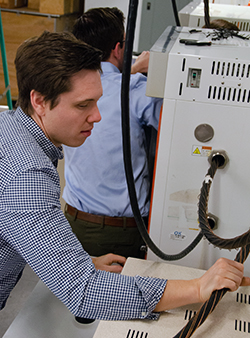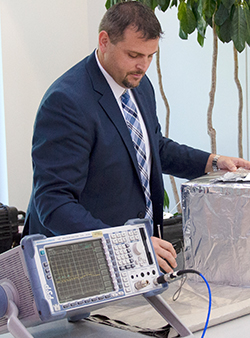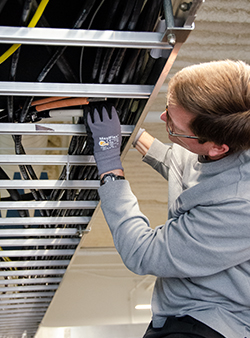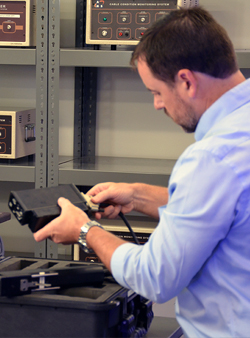The safe and efficient operation of autonomous microreactors for remote off-grid applications depends on the performance of critical sensors, processes, and components within the self-contained system. This project will develop on-line monitoring technologies that will improve the safety and economy of microreactors and support other advanced nuclear energy applications.
Research and Development
On-line Monitoring System to Support Autonomous Remote Microreactor Operations
Methods to Evaluate Embedded Sensor Performance and Reliability in TCR Components
The safe and efficient operation of next-generation reactors will be enabled via additive manufacturing and embedded sensing. This project will develop methods to characterize the performance of embedded sensors used for structural health monitoring, autonomous operations, and other applications that will improve the safety and economy of future nuclear reactors.
On-line Cable Condition Monitoring and Aging Management of Nuclear Power Plant Cables and End Devices
The sustainability of the current fleet of nuclear power plants depends on the performance of key components, such as cables, that cannot easily or economically be replaced. This project will develop technology to continuously monitor cable systems for faults and age-related degradation.
Instrumentation and Control Design for Small Modular Reactors
This is a project for development of new sensors capable of meeting small modular reactor measurement needs, adaptation of existing and emerging sensing technologies capable of being used in small modular reactors, and development of commercially viable maintenance practices to enable safe and efficient operation of small modular reactors.
Distributed Antenna System for Wireless Data Communication in Nuclear Power Plants
The goal of this project is to identify the optimal system components and installation practices that should be used when implementing a distributed antenna system in a nuclear power plant with the goal of maximizing coverage and performance, minimizing electromagnetic and radio frequency interference, and addressing wireless coexistence and other installation considerations. The research will also develop wireless sensor technologies that meet the needs of the nuclear industry for equipment condition monitoring using commercial wireless transmitters.
Health Monitoring of Digital I&C Systems using Online Electromagnetic Measurements
Under this project, electrical and instrumentation & control equipment that experiences a high rate of failure will be artificially degraded in a simulated plant electromagnetic environment. The emission signatures from this equipment will be measured, recorded, and correlated to the health or condition of the equipment. The goal of this effort is to establish the basis for automated analysis of the emission signatures. This effort will result in development of a condition monitoring tool kit that will allow for the identification of degrading components prior to equipment failure.
Fault Detection of Digital Instrumentation and Control Systems using Integrated Electromagnetic Compatibility and Automated Functional Testing
This project proposes the design and development of a system that integrates electromagnetic compatibility and automated functional testing to enable comprehensive assessment and fault detection of digital instrumentation and control systems. The project involves detailed electromagnetic/radio frequency interference fault research, laboratory testing, and hardware/software design.
Development of Cable Aging Acceptance Criteria for Nuclear Facilities
The purpose of this project is to develop acceptance criteria for mechanical, electrical, thermal, and chemical condition monitoring (CM) tests that trend with age-related degradation of electrical cables. The work to be performed under the project includes subjecting cables to thermal accelerated aging, radiation exposure, and periodic testing using CM techniques to trend their properties as they age. After the cable samples have been subjected to thermal and radiation aging, they will then be exposed to loss of coolant accident (LOCA) conditions to determine their point of failure.
Resolving the Regulatory Issues with Implementation of On-line Monitoring Technologies to Extend the Calibration Intervals of Process Instruments in Nuclear Power Plants
This project will compile, analyze, and document the state-of-the-art in OLM technology for online calibration verification for pressure, level, and flow transmitters in nuclear power plants. In doing so, AMS will work with the NRC and the nuclear industry to develop a guideline document to describe the technical basis for extending the calibration intervals of transmitters using historical data, drift analysis, probabilistic risk assessment (PRA), and OLM.




























